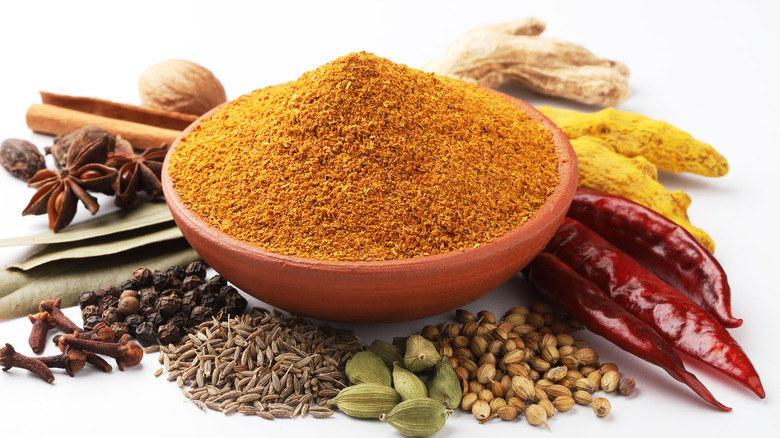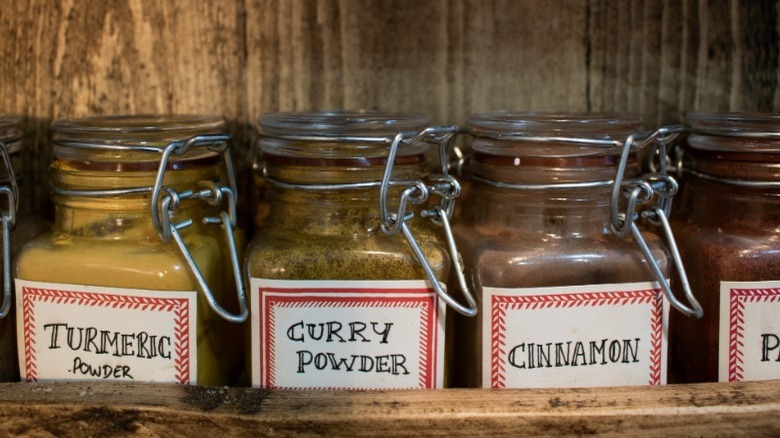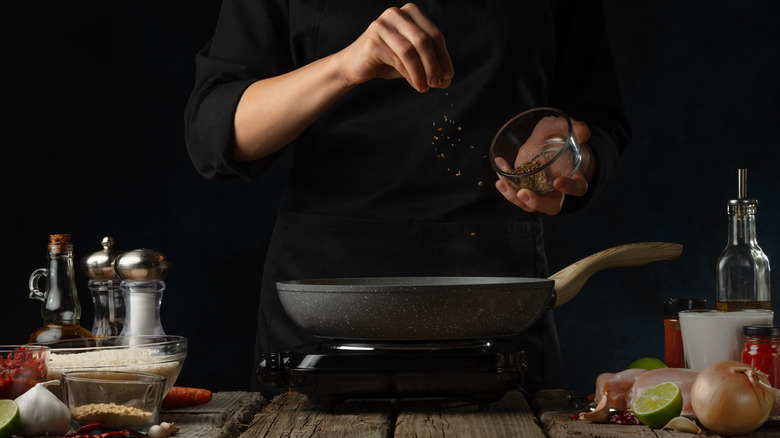Is There A Difference Between Curry Powder And French Vadouvan?
With a population of more than 1.4 billion people, India has an array of vibrant cuisines in its many states. In Punjab in the north, a popular way to prepare food is to use the tandoor, a type of clay oven. Traveling southeast to West Bengal, the mustard plant – everything from its seeds to its greens — play a prominent role in local dishes. Along the country's southern coast, coconut milk and chilies flavor many dishes. Each region uses its own masalas, or distinctive mix of spices.
Both curry powder and French vadouvan draw inspiration from some spices used in Indian cooking, but neither one is authentically Indian. In many ways, they are both examples of a type of culinary translation. These seasoning blends started out as the efforts of two different countries to try to capture some of the qualities of Indian flavors. And while they share some ingredients, curry powder and vadouvan are two different spice mixes.
What is curry powder?
The curry powder found on supermarket shelves actually dates back centuries. This pre-made spice mix got its start in the late 1700s when the British colonized India, so people have mixed feelings about it. The East India Company developed an early version of curry powder, which was meant to mimic a masala, or spice blend, from the port of Madras. Despite its checkered past, Madras-style curry powders are still widely available.
Some of the key ingredients of curry powder include cumin, coriander, fenugreek, and turmeric. It's the turmeric that helps give the powder its distinctive yellow hue. And this is one of the ingredients that distinguishes curry powder from vadouvan. While turmeric is an important component of curry powder, it is sometimes left out of vadouvan completely.
Pepper is another important part of this powder as well. The type of pepper, ranging from black pepper to chile pepper, influences how spicy the mix turns out. Cinnamon sometimes makes an appearance in today's madras-style curry powders as does clove and cardamom as well.
Curry powder and vadouvan can be used interchangeably, but you may want to adjust the amount of spice mix when substituting. If you wanted to replace vadouvan in this mussels dish with curry powder, for example, cut the amount of curry powder in half to start. Curry powder packs more of a punch, so you don't want to overwhelm something delicate like mussels.
What is French vadouvan?
Vadouvan is a French take on curry powder. Like curry powder, it has its roots in colonialism. This spice blend came from Pondicherry (now Puducherry), which was colonized by the French in 1674. The French fought with the British for control of this district over the centuries, and they lost and regained it several times. During this era, the French developed their own take on Indian masalas, creating what is known as vadouvan.
Curry powder and vadouvan share several ingredients, including cumin, coriander, fenugreek, and pepper. The use of pepper may be present, but the overall heat of vadouvan can be quite mild compared to curry powder. While the French dialed down the heat, they managed to up the flavor with some special items that help make vadouvan unique.
The use of toasted onions, garlic, and shallots gives the spice mix a richer flavor. Curry leaves are also often found in vadouvan, which helps give the blend greater depth. The complexity of this spice mix may explain why it has enjoyed great popularity among some chefs. Many are pleased with the results of trading out traditional curry powder for vadouvan in such dishes as coconut vegetable curry or sweet potato curry soup.
It's important to remember, however, when using vadouvan in place of curry powder that your dish may lack turmeric's distinctive flavor and color and you should add a bit more of it since it's less pungent.


